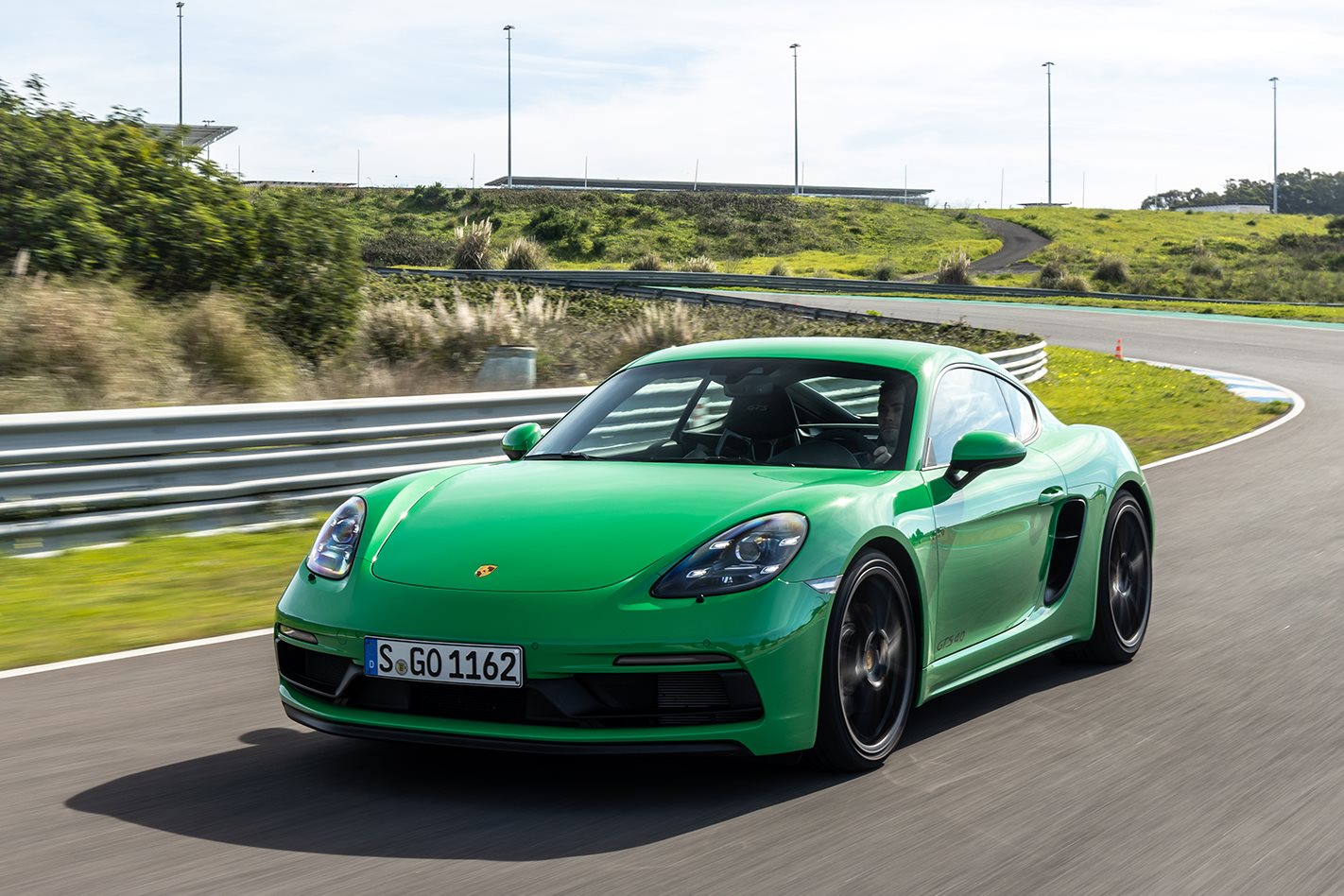Things we like
- Fizzy atmo six
- Sweet-shifting ‘box
- Chassis balance
- Perfect ergonomics
- Strong resale
Not so much
- Gear ratios still too long
- PDK will be more popular than manual
- Heavier than old GTS
- Scabby warranty
The Wheels Verdict: The new Cayman GTS is a win for enthusiasts. Now more capable than ever, it’s also fitted with the kind of rev-hungry engine that real drivers crave. Oh, and trust us, buy the manual version. The dual-clutch option might be fractionally quicker (and more popular) but you’ll be robbing yourself of one of the most tactile driving experiences around.

WHAT IS THE PORSCHE CAYMAN GTS?
Crikey, it’s another six-cylinder Cayman! After debuting its fresh 4.0-litre flat six in the Cayman GT4, Porsche has plonked the same donk in this revamped GTS. It’s easiest to think of the GTS as the pinnacle of the regular 718 Cayman range: sharper and faster than a Cayman S, but less frenzied and hung up on lap times as the track-focused GT4. Oh, and in another boon, this new GTS is actually fractionally cheaper than the car it replaces.
WHY WE’RE TESTING IT
The GTS has long been our Cayman of choice. Balanced, precise and fitted with all the options you’d want as standard, it makes a compelling case as the best everyday sports car on sale. We flew to Portugal to see if this new version continues the trend.
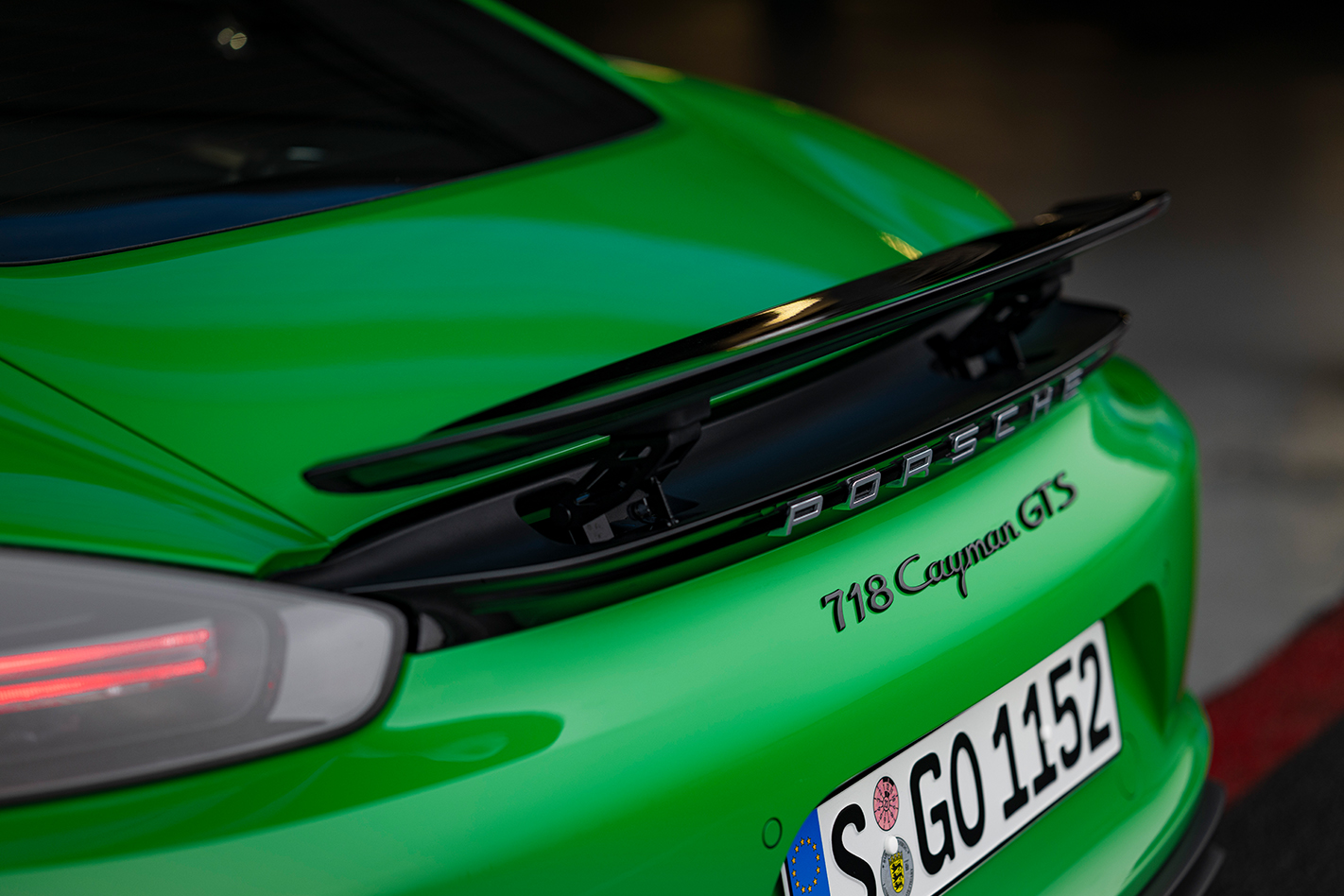
PORSCHE CAYMAN GTS REVIEW
Rarely have admissions of wrongdoing been so emphatic. Or sounded so good. Three years after controversially dumping the Cayman’s aspirated six-pot engine in favour of turbocharged flat-fours, Porsche has unashamedly raised its hand and reverted to its original recipe.
Welcome, dear readers, to the new Cayman GTS, a near-perfect sports car that takes the howling 4.0-litre flax-six first seen in the Cayman GT4 and plonks it into a package that’s more comfortable, almost as capable and costs close to 20 percent less.
The centrepiece of this car is, as you’d expect, the engine. It’s mechanically identical to the unit found in the Cayman GT4, meaning it’s a stroked and bored development of the 911 Carrera’s 9A2 3.0-litre with the turbos removed. Peak torque is the same as the GT4, at a healthy 420Nm between 5000-6500rpm, with the GTS’s only powertrain concession coming via a slightly different ECU that sees it produce 15kW less than the GT4. Still, a peak power figure of 294kW at 7000rpm is hardly limp-wristed in a car weighing 1405kg. Porsche claims 0-100km/h in 4.5sec, which is a tenth quicker than the outgoing model, and a top speed of 293km/h. Completing the refreshingly old-school recipe is a sweet-shifting six speed manual which is currently the only transmission available. A version with a seven-speed dual-clutch will start production at the end of 2020.
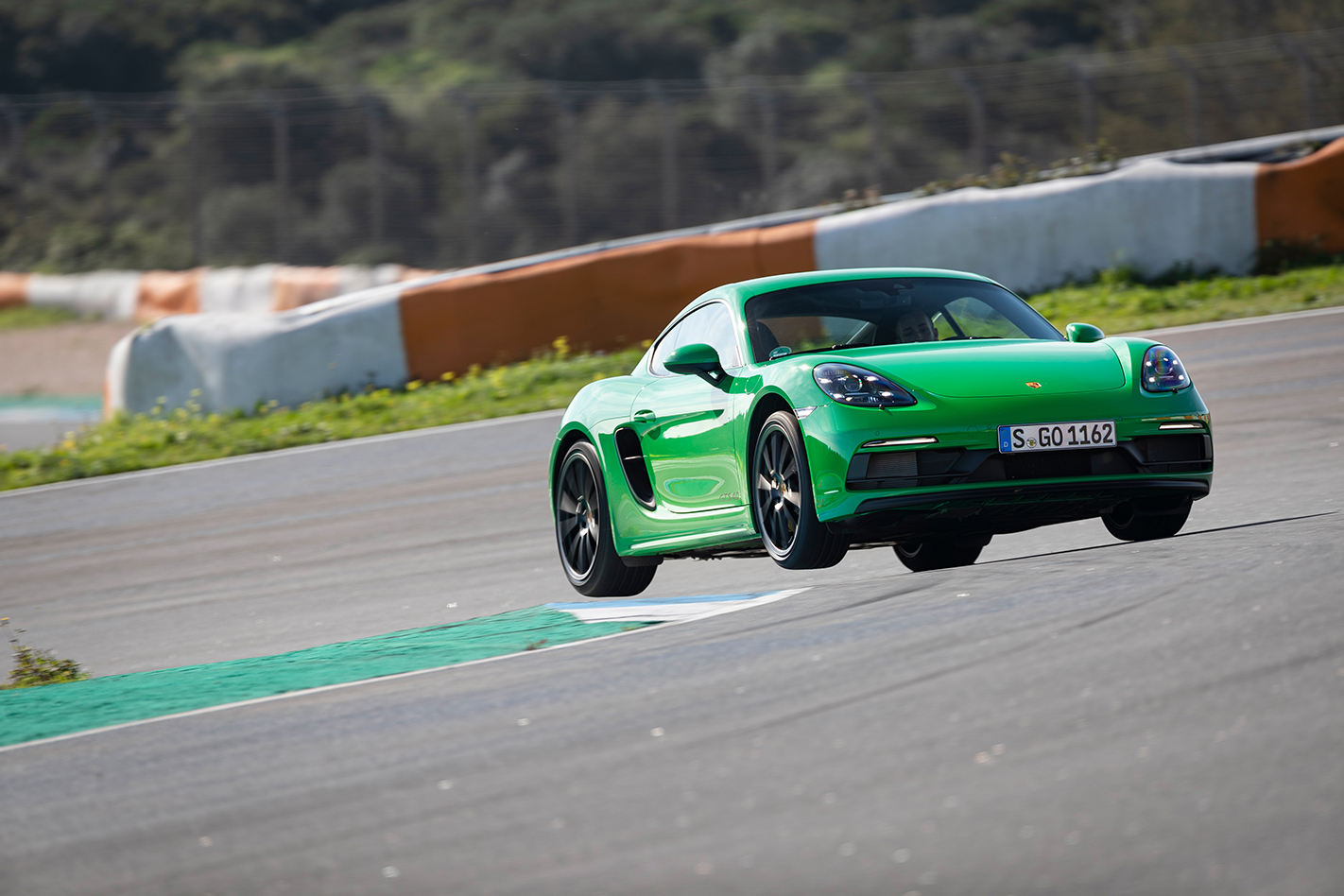
The burning question, of course, is whether we’ll see this engine proliferate the rest of the Cayman range? “No, the regular Cayman and Boxster will keep the turbo engines,” says the man in charge of Porsche’s boxer engines, Markus Baumann. “There are a lot of customers that want a turbo because of the torque. They still sell very well.”
Many of those customers are new to the Porsche brand too, which has helped cement the future of the turbo engines, as does their popularity in China. Real enthusiasts, however, will want the 4.0-litre. While it mightn’t have the low-end muscle of the force-fed unit it replaces, it takes two corners of Estoril at the international launch in Portugal to confirm that this is a better sports car engine. It sounds purposeful at idle, revs cleanly and eagerly to the 7800rpm cut out, is surprisingly tractable, and delivers a level of response and tactility that’s been missing from the regular Cayman range for years.
Sounds good too. GTS models score the same twin-exit sports exhaust as the GT4 and the way the timbre transforms from a guttural growl to a hard-edged howl will have you chasing every last rev. And don’t get us started on the linearity of the power delivery; delayed gratification is a GTS calling card. Plus, where euro cars are fitted with exhaust particulate filters, Aussies cars aren’t, so you can expect our GTS models to deliver an even fruiter soundtrack.
It’s also a powertrain that’s in perfect lock-step with the chassis. GTS variants sit 20mm lower than standard 718s and run spring and damper rates that are five percent stiffer. Roll bars are beefier front and rear compared to lesser Caymans too, though they aren’t adjustable like you get in the GT4. Three-way adjustable adaptive dampers, unique 20-inch alloys shod with Pirelli P Zeros measuring 235/35R20 up front and 265/35R30 out back, and beefier brakes (more on these later) complete the chassis changes.
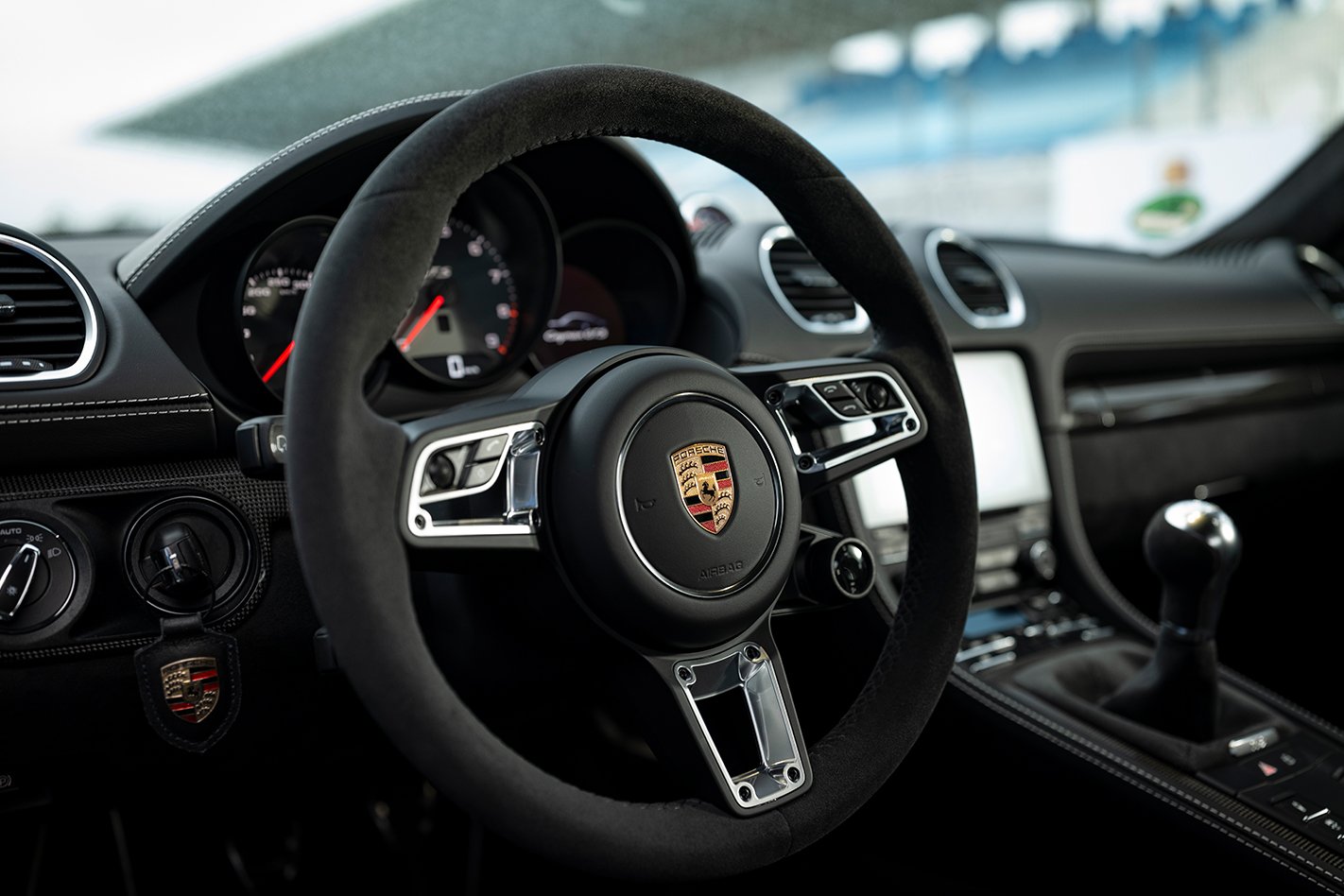
Drive the GTS hard and the overriding sensation is one of balance and forgiveness. This isn’t a car where you’ll suddenly find yourself backwards wondering what happened as you rush towards the barriers. If you get it wrong here, it’s entirely your fault. Not that you’re likely too. While it relishes smooth inputs, the GTS is equally tolerant of sloppy ones. Get too greedy with the throttle or too quick with the wheel (steering is relatively fast at 2.5 turns lock-to-lock) and it’ll push into benign under- or oversteer, all the while clearly telegraphing that you, as the driver, have let the team down.
Provoke it deliberately and there’s ample on-throttle adjustability to be had, but the real joy here is in being smooth and chasing mid-corner speed. And in shifting gears. This is one of the sweetest and slickest manual ’boxes around, which makes the realisation that the majority of GTS sales will be the PDK kind of a bummer. In fact, our only criticism of the gearbox is that the ratios are still too long but don’t expect that to change any time soon. ‘We need them to meet emissions standards” says Porsche GT boss Andreas Preuninger. Still, we can’t help but dream of how punchier ratios would transform the car.
Torque vectoring and a mechanical limited slip differential are standard, as is a rev-matching function that activates automatically in Sport and Sport Plus. Diehard heel-and-toers can turn the system off, but it’s so good and smooth that it’s actually easier to keep it on and to focus on your braking.
Stopping power has taken a significant step forward compared to the old GTS. Where that car ran 4-piston front brakes with 330mm front discs, the new GTS uses 6-piston monobloc callipers with 350mm cross-drilled discs as standard. Carbon ceramics are also available, if you’re willing to part with an additional $15,370.
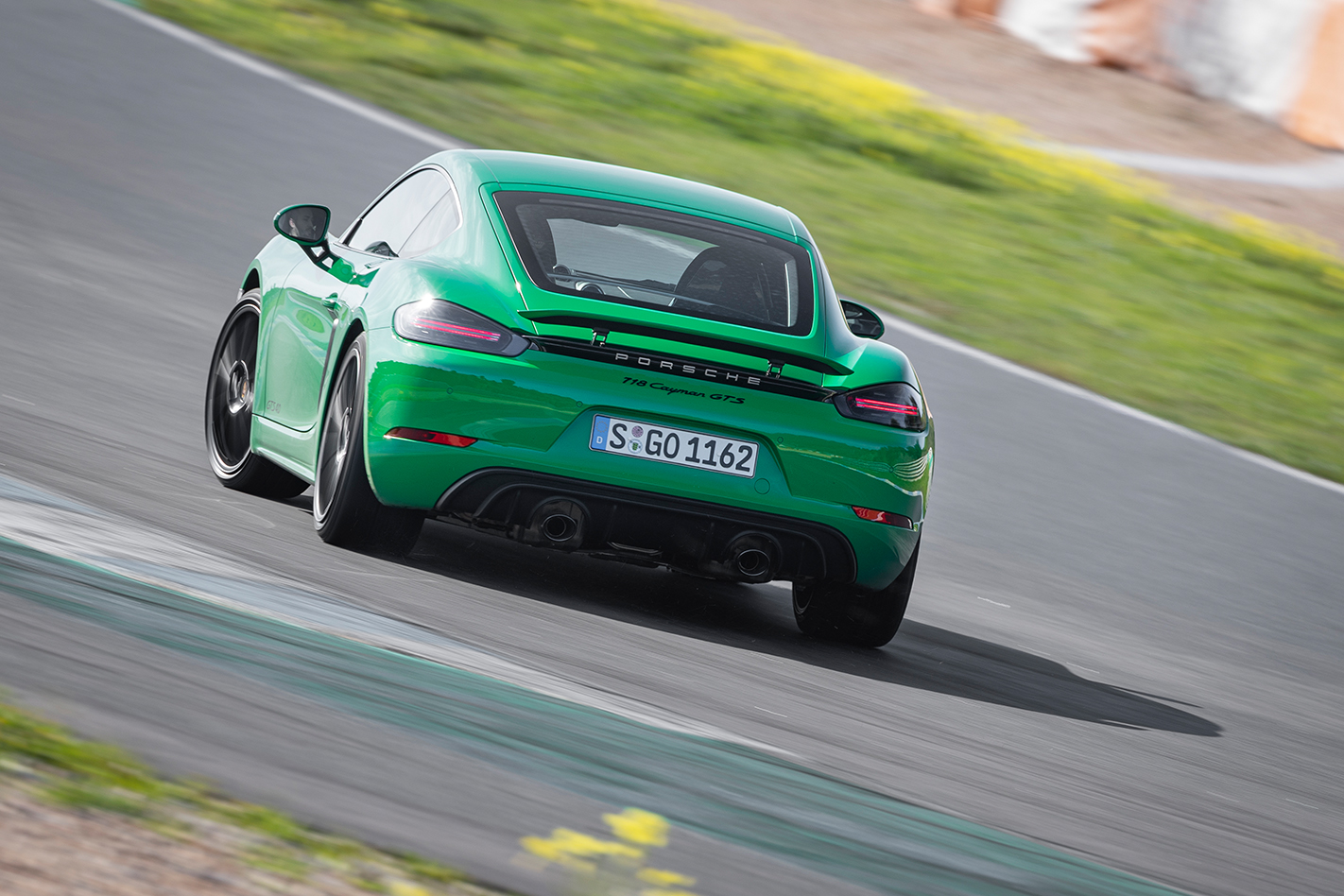
The only other option worth considering is a softer suspension set-up, which drops the ride-height by 10mm rather than 20 and brings the promise of greater on-road compliance. Unlike the carbon brakes, ticking this box won’t cost you any extra, though whether it’s for you will depend on your priorities as it does introduce a noticeable level of roll and doesn’t feel as sharp as the standard set-up on track.
Inside, GTS owners are ensconced in a cabin trimmed with a rich mix of leather and alcantara, but the genius is in the ergonomics. The driver’s hip-point, the placement of the pedals, the adjustment of the steering wheel, the positioning of the shifter … everything is exactly where you want it to be. Porsche’s Track Precision app, which logs real time data and video, is standard too, plus Aussie cars also score a rear camera, reverse parking sensors and cruise control. A pity the warranty is still only three years.
The Cayman GTS is predictably brilliant, then. And unusually it’s fractionally cheaper than the car it replaces ($172,400 vs $173,800). Think of it as a sports car that delivers 90 percent of the GT4’s brilliance for $35K less and you’re most of the way there. Throw in the realisation that this will likely be the better road car thanks to its greater refinement and ride, and it might be the best admission Porsche has ever made.
RIVALS
BMW M2 CS, Jaguar F-Type, Audi TT RS, Alpine A110 S
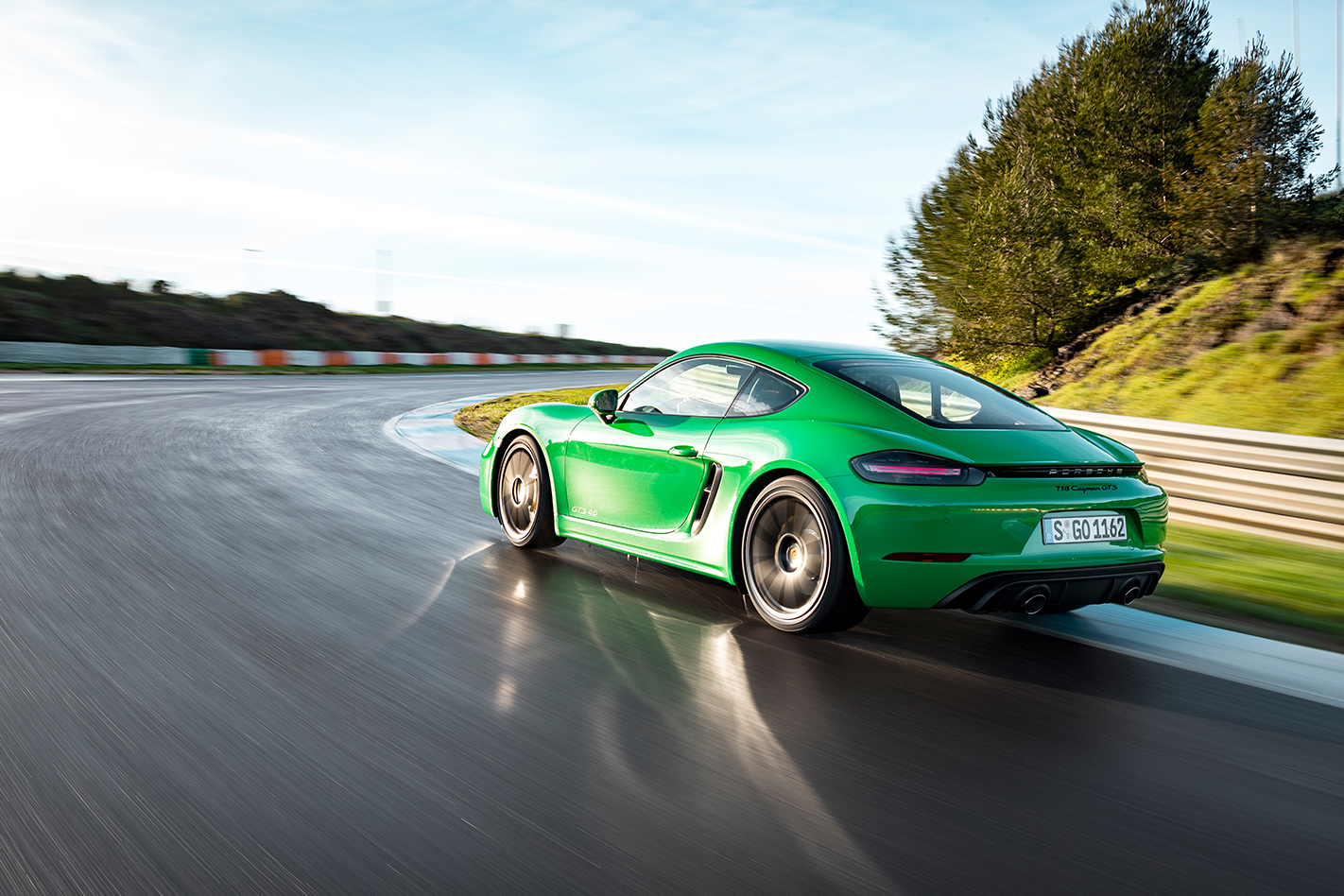
PORSCHE CAYMAN GTS PRICE & SPECS
- Engine: 3995cc 6cyl, DOHC, 32v
- Max power: 294kW @ 7000rpm
- Max torque: 420Nm @5000-6500rpm
- Transmission: six-speed manual
- Weight: 1405kg
- 0-100km/h: 4.5sec (claimed)
- Economy: 10.8L/100km
- Price: $172,400
Things we like
- Fizzy atmo six
- Sweet-shifting ‘box
- Chassis balance
- Perfect ergonomics
- Strong resale
Not so much
- Gear ratios still too long
- PDK will be more popular than manual
- Heavier than old GTS
- Scabby warranty


